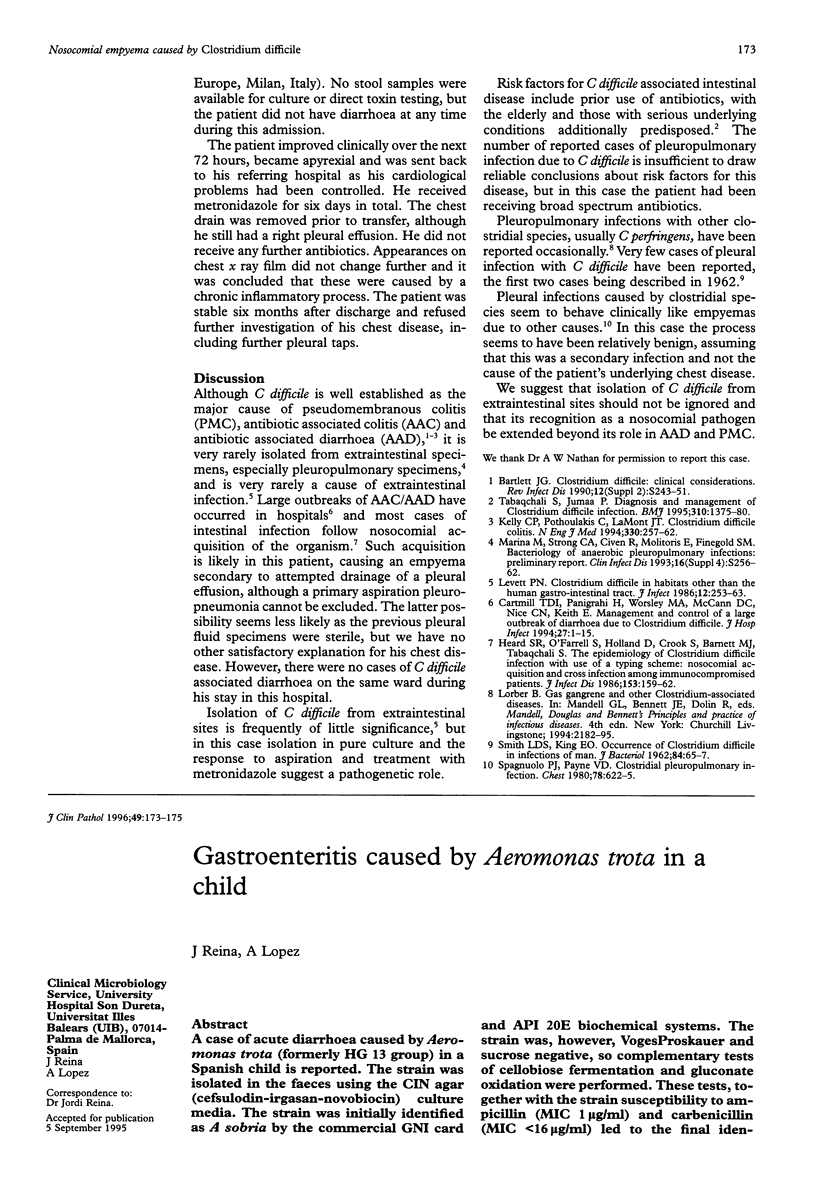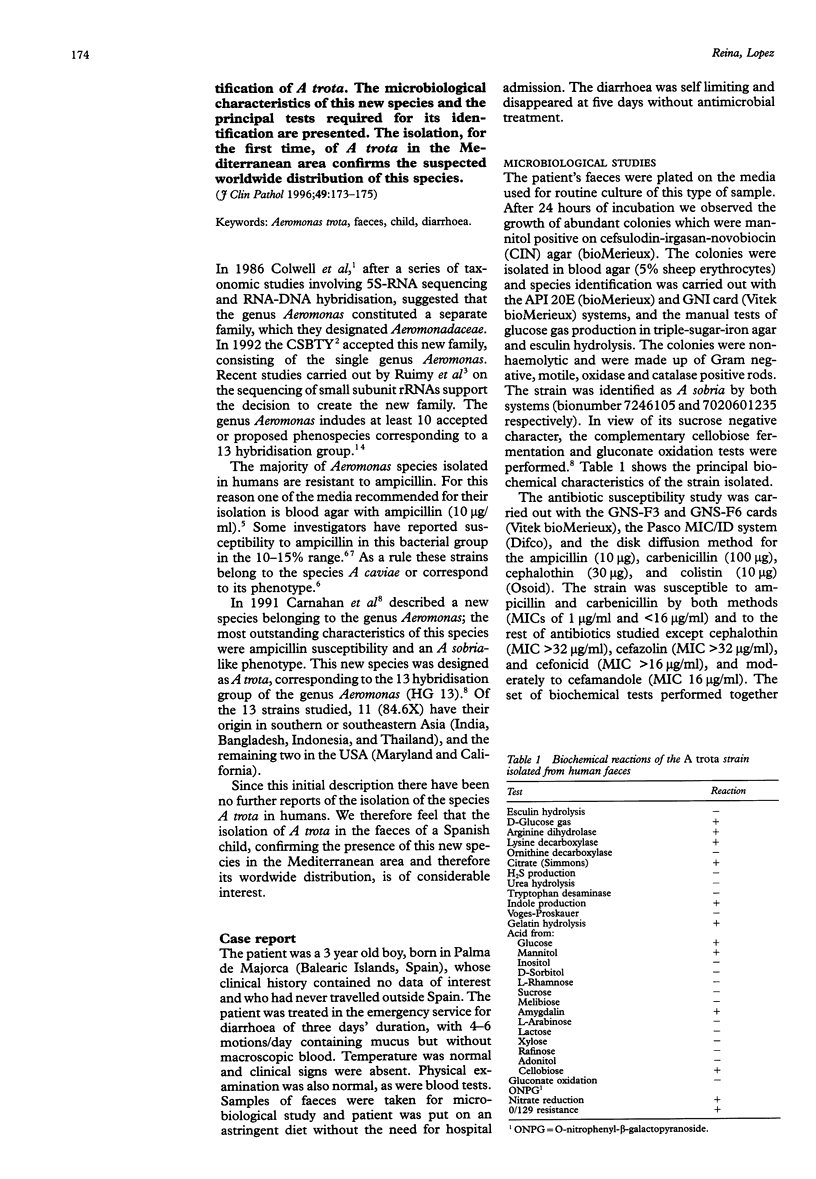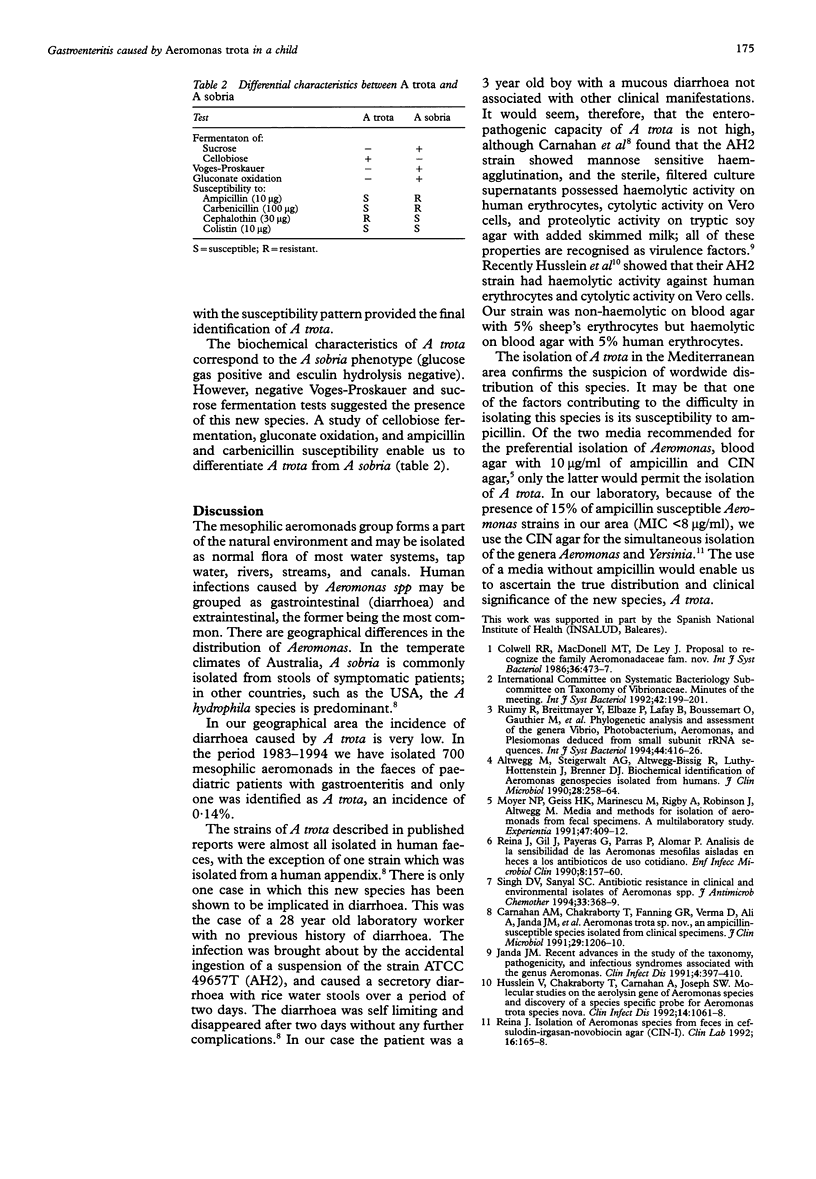Abstract
A case of acute diarrhoea caused by Aeromonas trota (formerly HG 13 group) in a Spanish child is reported. The strain was isolated in the faeces using the CIN agar (cefsulodin-irgasan-novobiocin) culture media. The strain was initially identified as A sobria by the commercial GNI card and API 20E biochemical systems. The strain was, however, VogesProskauer and sucrose negative, so complementary tests of cellobiose fermentation and gluconate oxidation were performed. These tests, together with the strain susceptibility to ampicillin (MIC 1 microgram/ml) and carbenicillin (MIC < 16 micrograms/ml) led to the final identification of A trota. The microbiological characteristics of this new species and the principal tests required for its identification are presented. The isolation, for the first time, of A trota in the Mediterranean area confirms the suspected worldwide distribution of this species.
Full text
PDF


Selected References
These references are in PubMed. This may not be the complete list of references from this article.
- Altwegg M., Steigerwalt A. G., Altwegg-Bissig R., Lüthy-Hottenstein J., Brenner D. J. Biochemical identification of Aeromonas genospecies isolated from humans. J Clin Microbiol. 1990 Feb;28(2):258–264. doi: 10.1128/jcm.28.2.258-264.1990. [DOI] [PMC free article] [PubMed] [Google Scholar]
- Carnahan A. M., Chakraborty T., Fanning G. R., Verma D., Ali A., Janda J. M., Joseph S. W. Aeromonas trota sp. nov., an ampicillin-susceptible species isolated from clinical specimens. J Clin Microbiol. 1991 Jun;29(6):1206–1210. doi: 10.1128/jcm.29.6.1206-1210.1991. [DOI] [PMC free article] [PubMed] [Google Scholar]
- Husslein V., Chakraborty T., Carnahan A., Joseph S. W. Molecular studies on the aerolysin gene of Aeromonas species and discovery of a species-specific probe for Aeromonas trota species nova. Clin Infect Dis. 1992 May;14(5):1061–1068. doi: 10.1093/clinids/14.5.1061. [DOI] [PubMed] [Google Scholar]
- Janda J. M. Recent advances in the study of the taxonomy, pathogenicity, and infectious syndromes associated with the genus Aeromonas. Clin Microbiol Rev. 1991 Oct;4(4):397–410. doi: 10.1128/cmr.4.4.397. [DOI] [PMC free article] [PubMed] [Google Scholar]
- Moyer N. P., Geiss H. K., Marinescu M., Rigby A., Robinson J., Altwegg M. Media and methods for isolation of aeromonads from fecal specimens. A multilaboratory study. Experientia. 1991 May 15;47(5):409–412. [PubMed] [Google Scholar]
- Reina J., Gil J., Payeras G., Parras F., Alomar P. Análisis de la sensibilidad de las Aeromonas mesófilas aisladas en heces a los antibióticos de uso cotidiano. Enferm Infecc Microbiol Clin. 1990 Mar;8(3):157–160. [PubMed] [Google Scholar]
- Ruimy R., Breittmayer V., Elbaze P., Lafay B., Boussemart O., Gauthier M., Christen R. Phylogenetic analysis and assessment of the genera Vibrio, Photobacterium, Aeromonas, and Plesiomonas deduced from small-subunit rRNA sequences. Int J Syst Bacteriol. 1994 Jul;44(3):416–426. doi: 10.1099/00207713-44-3-416. [DOI] [PubMed] [Google Scholar]
- Singh D. V., Sanyal S. C. Antibiotic resistance in clinical and environmental isolates of Aeromonas spp. J Antimicrob Chemother. 1994 Feb;33(2):368–369. doi: 10.1093/jac/33.2.368. [DOI] [PubMed] [Google Scholar]


